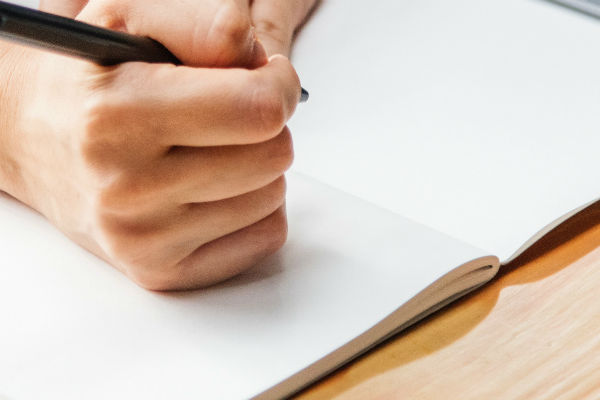
【名词&注释】
线粒体(mitochondria)、脆弱性(vulnerability)、危险性(risk)、自然环境(natural environment)、高尔基体(golgi apparatus)、自然现象(natural phenomena)、自然景观(natural landscape)、中心体(centrosome)、注意安全(pay attention to the safety)、动物细胞有丝分裂(animal cell mitosis)
[单选题]昼夜更替,潮起潮落,地球自转运动产生了许许多多的自然现象。在下列现象中,可以成为地球自转的证据是
A. 日月升落
B. 极昼极夜
C. 月相变化
D. 四季转换
查看答案&解析
点击获取本科目所有试题
举一反三:
[单选题]下列性状( )最为进化。
A. 环纹导管
B. 孔纹导管
C. 螺纹导管
D. 网纹管胞
[单选题]对易燃、易爆、易腐蚀等危险性药品要( )。
A. 注意安全(pay attention to the safety)、另设仓库
B. 另设仓库、单独存放
C. 注意安全(pay attention to the safety)、单独存放
D. 注意安全(pay attention to the safety)、另设仓库、单独存放
E. 单独存放
[单选题]湖泊消亡引起了湖区自然景观(natural landscape)的变化,这反映了自然环境的
A. 整体性
B. 差异性
C. 稳定性
D. 脆弱性
[单选题]BHaving a husband means an extra seven hours of housework each week for women, according to a new study. For men, getting married saves an hour of housework a week. “It’s a well-known pattern,” said lead researcher Frank Stafford at University of Michigan’s Institute for Social Research. “Men usually work more outside the home, while women take on more of the housework.”
A. He points out that differences among households(家庭)exist. But in general, marriage means more housework for women and less for men. “And the situation gets worse for women when they have children,” Stafford said.
B. Overall, times are changing in the American home. In 1976, women busied themselves with 26 weekly hours of sweeping-and-dusting work, compared with 17 hours in 2005. Men are taking on more housework, more than doubling their housework hours from six in 1976 to 13 in 2005.
C. Single women in their 20s and 30s did the least housework, about 12 weekly hours, while married women in their 60s and 70s did the most-about 21 hours a week.
D. Men showed a somewhat different pattern, with older men picking up the broom more often than younger men. Single men worked the hardest around the house, more than that of all other age groups of married men.
E. Having children increases housework even further. With more than three children, for example, wives took on more of the extra work, clocking about 28 hours a week compared with husbands’10 hours.
F. 45. According to the “well-known pattern” in Paragraph 1, a married man___________.
G. takes on heavier work B. does more housework
H. is the main breadwinner D. is the master of the house
[单选题]下列有关细胞结构和功能的叙述,正确的是
A. 在植物细胞有丝分裂末期高尔基体参与细胞壁形成
B. 在动物细胞有丝分裂(animal cell mitosis)间期能观察到纺锤体和中心体(centrosome)
C. 分泌蛋白质合成后在内质网和细胞质基质中加工
D. 质粒和线粒体是既有核酸又有外膜的细胞结构
[单选题]CPeople from East Asia tend to have more difficulty than those from Europe in distinguishing facial expressions--and a new report published online in Current Biology explains why.
A. Rachael Jack, University of Glasgow researcher, said that rather than scanning evenly
B. (均匀的) across a face as Westerners do, Easterners fix their attention on the eyes.
C. "We show that Easterners and Westerners look at different face features to read facial expressions," Jack said. "Westerners look at the eyes and the mouth in equal measure, whereas Easterners favor the eyes and neglect (忽略) the mouth."
D. According to Jack and her colleagues, the discovery shows that human communication of emotion is more complex than previously believed. As a result, facial expressions that had been considered universally recognizable cannot be used to reliably convey emotion in cross-cultural situations.
E. The researchers studied cultural differences in the recognition of facial expressions by recording the eye movements of 13 Western Caucasian and 13 East Asian people while they observed pictures of. expressive faces and put them into categories: happy, sad, surprised, fearful, disgusted, angry, or neutral. They compared how accurately participants read those facial expressions using their particular eye movement strategies.
F. It turned out that Easterners focused much greater attention on the eyes and made significantly more errors than did Westerners. "The cultural difference in eye movements that they show is probably a reflection of cultural difference in facial expressions," Jack said. "Our data suggest that whereas Westerners use the whole face to convey emotion, Easterners use the eyes more and mouth less."
G. In short, the data show that facial expressions are not universal signals of human emotion. From here on, examining how cultural factors have diversified these basic social skills will help our understanding of human emotion. Otherwise, when it comes to communicating emotions across cultures, Easterners and Westerners will find themselves lost in translation.
H. 66. The discovery shows that Westerners __
I. pay equal attention to the eyes and the mouth
J. consider facial expressions universally reliable
K. observe the eyes and the mouth in different ways
L. have more difficulty in recognizing facial expressions
本文链接:https://www.zhukaozhuanjia.com/download/ke3ez8.html
